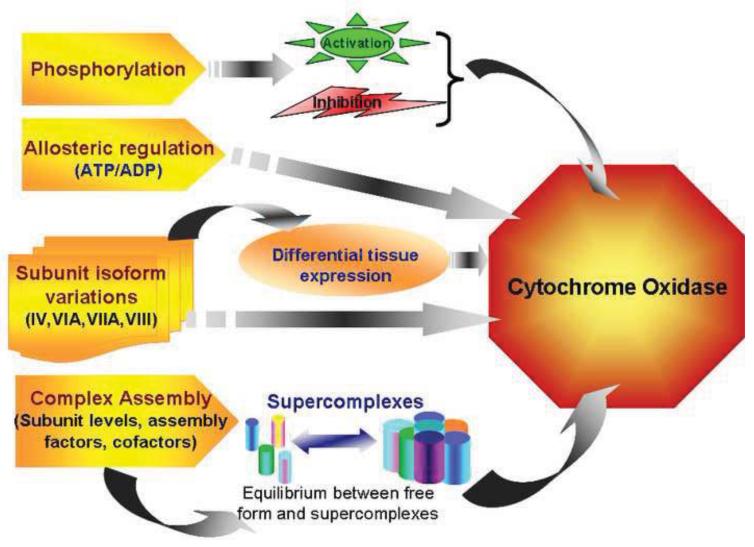Figure 1.
Regulation of Cytochrome C Oxidase. Cells control CcO function by regulating both protein content and enzyme activity. Co ordinated expression of subunits, their assembly into complexes and supercomplexes provide a global control over protein levels of the enzyme. Differential cell and tissue specific expression of subunit isoforms and their relative abundance are used to change enzyme composition and alter kinetic properties of CcO activity in accordance with oxidative capacity of the tissues. Rapid adaptation to cellular bioenergetic requirements is brought about by binding small molecules like ATP/ADP, di-iodo thyronine, NO and by phosphorylation of specific subunits that either increase or decrease CcO activity. The multimodal regulation of CcO activity is summarized in this figure.

